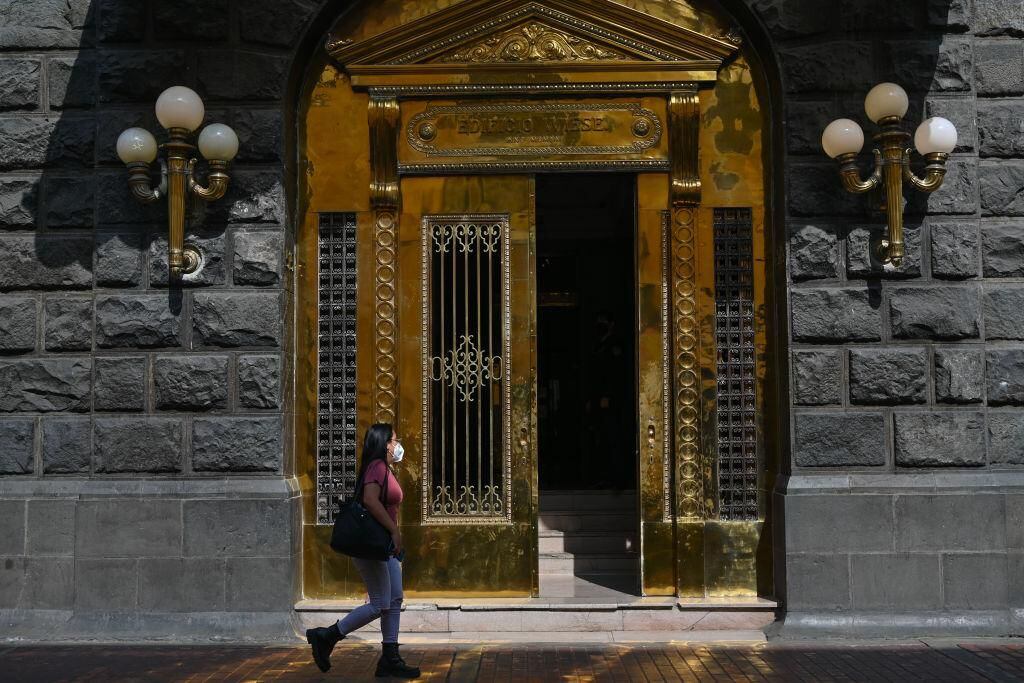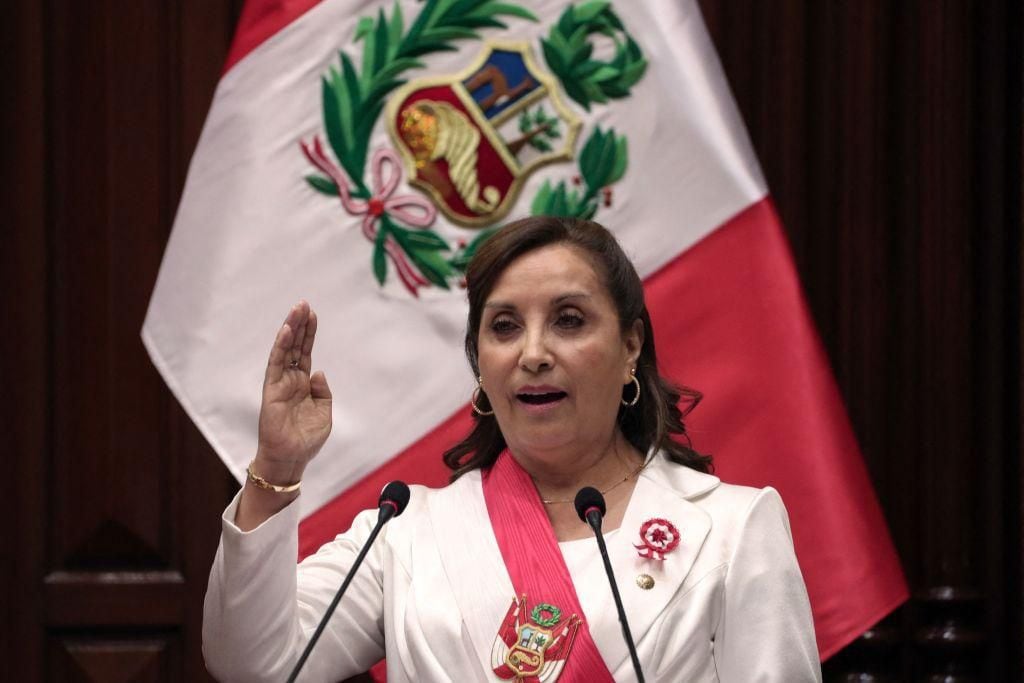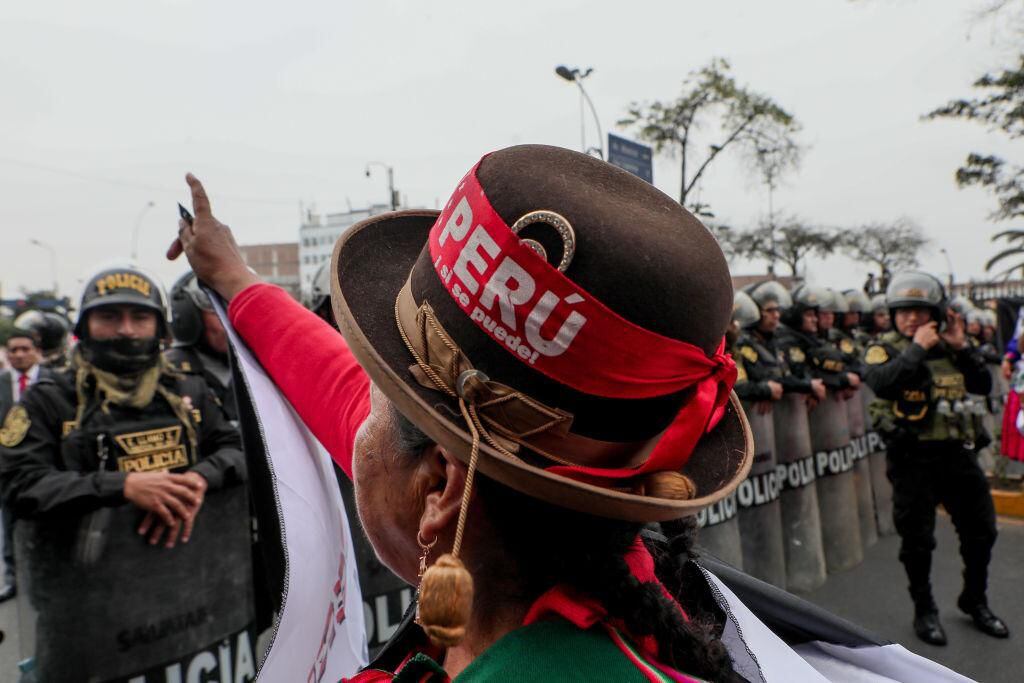:quality(75)/cloudfront-us-east-1.images.arcpublishing.com/elcomercio/6NSYXKJEAFG7JPTHDJM4J23NQ4.jpg)
His parents, siblings, and 12 uncles had already been in the United States for at least seven years, but JC had stayed in Peru for his university studies.
What finally convinced him to meet with his relatives was the threat of crime he suffered in Lima, the capital, he says.
LOOK: Russian prisoners released to fight with Wagner in Ukraine who commit terrible crimes back in Russia
“The pandemic was strong, many of my relatives left, the situation was not good due to the governments that came and went. In addition, my neighborhood was not quiet, “JC tells BBC Mundo, who prefers not to give his name.
“Since they knew my family was here, they called me from a prison to demand money, they had the idea that I had a lot of money. They waited for me when I came back from work at night. So I made the decision to come,” says the young Peruvian. 30 years old.
“I had to quit my job and start from scratch,” says JC, who in 2022 traveled from Lima to Mexico, applied for asylum at the US border and arrived in Paterson, New Jersey, on the country’s east coast.
JC was one of the 401,740 Peruvians who left the country in 2022 and have not returnedaccording to figures sent by the National Superintendence of Migrations of Peru to BBC Mundo.
Until June 2023 the number grew to 415,393.
These figures almost quadruple the non-return departures of 2021, the year in which 110,185 Peruvians left their country.
“I worked in different fields: construction, roofing (ceilings), as a waiter, as a dishwasher (dishwasher), until the opportunity for this restaurant presented itself,” says JC, referring to the dining room that he now manages in Paterson and that opened a few years ago. months with some of their relatives who already lived there.

Alejandra, 28, also lives in Paterson, who also arrived from Peru in 2022 “for economic reasons” and who prefers not to give her last name.
“I studied Communication at university. But I was having a bad time in my career. She worked in a well-known channel in Peru as a reporter. But I did not have a fixed contract, but eventual (commissions) ”, she tells BBC Mundo.
“I wanted something fixed. But the strikes came, the marches. In addition, the journalists were being attacked, so I no longer saw myself there, ”he recounts. “Just a friend told me that she was coming (to the United States) so I said: I’m going to try it and see what happens.”
He flew from Lima to Mexico City. She later applied for asylum at the US border. Now she works in a bakery.
Since they arrived, JC and Alejandra have not returned to Peru and hope to regularize their immigration status.
In addition to the United States, Peruvians also left mainly for Spain, Chile and Mexico, according to Migration data, although that does not mean that they have necessarily stayed or settled in those places.
The fact that Mexico is one of the most chosen destinations makes analysts consulted by BBC Mundo think that the intention of many Peruvians is actually to reach the US border and request asylum.
But what is this increase in departures of Peruvians due to? Here are four possible reasons.
1. Pandemic and economic crisis
The last wave of increase in Peruvian emigration actually came from 2018, but the border closures due to the pandemic cut short the trend in 2020, according to Migration figures.
“During the economic boom (2010-2017), few Peruvians saw significant improvements in their lives. There were problems that were not resolved in education, health, access to water. That is part of the reasons why emigration began to increase in 2018 ”, he tells BBC Mundo ula bergauthor of two books on Peruvian emigration.

Now that the borders are open again, “the trend is recovering its course,” the sociologist tells BBC Mundo Tania Vasquezexpert in demography and migration from the Institute of Peruvian Studies (IEP).
Because just as the pandemic interrupted the rise of the emigration curve, now its economic effects may favor it.
In 2020, Peru’s economy contracted by 11%according to the country’s Central Reserve Bank (BCR).
Despite the slow recovery, in 2022 poverty increased by 1.6% compared to 2021 and 7.3% compared to 2019, according to the latest National Household Survey (ENAHO) from the National Institute of Statistics and Informatics ( INEI) of Peru.
“The government handled the pandemic very badly. People had to consume their small savings while the economy was paralyzed”, criticizes Teofilo Altamirano, author of the book “Exodus. Peruvians abroad (1992)”.
“Poverty increased, which creates dissatisfaction in families, children cannot access a good education, good health,” he tells BBC Mundo.
In addition, “Peru had a severe lockdown and, as a consequence, a massive collapse in economic growth that contributed to many people wanting to leave, because three quarters of the workers are in the informal sector and that sector was hit hard by the pandemic. Many people fell into poverty”, analyzes Ulla Berg.

2. Political crisis
For Altamirano, the political crisis that has hit the country for at least five years —Peru has had six presidents since 2018— also causes economic difficulties.
“This creates great instability in the economy for foreign investment. Investors have had to back off because they can’t plan for the long term. This translates into stagnation, in the decline of the Peruvian economy, of the GDP”, adds the anthropologist.

The combination of the economic crisis with political instability “has made people say ‘there is nothing for us here,’” says Ulla Berg, who believes that now “more Peruvians think they have a better chance of receiving asylum in the US .than in the past decade, when his country was more stable.”
3. Citizen insecurity
80% of Peruvians say they feel very unsafe or somewhat unsafe on the streets of the country due to delinquency and organized crime, according to the latest IEP survey on this topic, from June 2023.
“When I interview people who are now emigrating, they tell me that an important part (of their decision) is concern for the safety of their families: how they are going to grow up in this insecure country,” Vásquez told BBC Mundo.
Altamirano also believes that “there is dissatisfaction with continuing to live in Peru due to daily citizen insecurity.”
Insecurity in Peru worsened during the pandemic, as more and more people became unemployed, says Ulla Berg. According to the expert, many of the Peruvians who request asylum denounce that they suffer extortion, as in the case of JC.

“Many people feel that their lives are in danger as a result of this widespread violence, but also directed at people with small businesses or families abroad,” Berg says.
The survey by the Institute of Peruvian Studies says that 42% “report having been a victim of crime in the last three years.” In the last year, 28% say they have suffered some act of delinquency.
4. Migration networks
Despite the severity of these problems, Vásquez does not believe that the above three are necessarily the main reasons why Peruvians seem to be leaving the country.
“One of the reasons that I consider fundamental is ‘cumulative causation,'” he maintains. “Every time a country experiences emigration, migration networks are created in the destinations they go to. When these networks exist, there is always more emigration.”
Since the Peruvian emigrations in the 1980s and 1990s, caused by the economic crisis of the time and the internal armed conflict, these networks have grown and diversified, according to the sociologist.
In 1992, there were around 1.5 million Peruvians abroad, triple what there were in 1981, according to studies by Altamirano.
Between 1990 and 2020, Peruvians abroad totaled 3,309,635, 10.1% of the country’s population in 2020, according to INEI figures.
“There are more mobile, more transnational families. Before, we didn’t have those families in Peru. There are more resources to emigrate, more accumulated experiences, mobility practices that we did not have in the 90s”, says Vásquez.

Berg disagrees with this theory. “Cumulative causation can explain the existence of a migration infrastructure that helps people leave, borrow money and settle abroad, but it cannot explain why Peruvians leave in such large numbers in a few years,” says the author.
“The economic and political crisis, violence and crime as a result of unresolved social problems, and the impact of the pandemic are important parts of the picture of why this is happening now,” he opines.
Beyond the causes, Altamirano and Vásquez agree that it is still too early to call these travelers “emigrants”.
“Emigration is measured when the person leaves for more than a year,” Altamirano clarifies.
“Let’s wait until 2024, 2025, to see if they are indeed emigrants in the strict sense of the word. There we can tell how many are emigrants and how many are not. Much more research, analysis is needed to say that 400,000 Peruvians have emigrated in 2022. Let’s see if this becomes a pattern, ”she qualifies.
Vásquez believes that “it would not be rigorous to say that we are witnessing an exodus.”
“This can change in a couple of years because these Peruvians can return. It remains to see the real migratory balance ”, he explains.
Source: Elcomercio
I am Jack Morton and I work in 24 News Recorder. I mostly cover world news and I have also authored 24 news recorder. I find this work highly interesting and it allows me to keep up with current events happening around the world.






